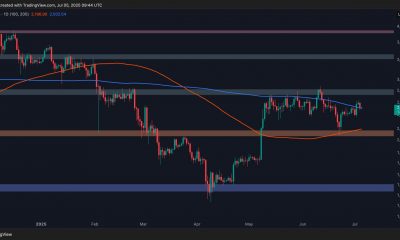Commodities
Oil prices lower on demand jitters, hopes for Gaza truce; OPEC+ meeting eyed

Investing.com– Oil prices slipped to weekly loss after settling lower Friday, as fresh hopes on a Gaza ceasefire and ongoing demand concerns weighed on sentiment ahead of the weekend’s meeting of top crude producers.
At 14:08 ET (18:08 GMT), fell 0.3% to $81.62 a barrel, while fell 1.2% to $76.99 a barrel.
Hamas-Israel truce back in focus
Israel agreed to a deal that would lead to a “lasting” ceasefire in the Gaza Strip, US President Joe Biden said Friday, referring to a three-phase ceasefire proposal.
The first phase, lasting six weeks, calls for complete ceasefire, and the withdrawal of Israeli forces from all populated areas of Gaza. The second phase seeks to end hostilities in Gaza permanently as well as the withdrawal of Israeli forces from the territory and would see the release of all remaining living hostages in Gaza. The final phase of the deal, meanwhile, involves a reconstruction plan for Gaza.
It remains to seen, however, whether Hamas will accept the proposal.
The news eased Middle East tensions, helping to further cool bets on a oil supply-risk premium in the region.
China PMIs disappoint, add to demand fears
Purchasing managers index data showed on Friday that Chinese manufacturing activity unexpectedly shrank in May, while non-manufacturing activity grew at a slower-than-expected pace.
The readings indicated that Chinese business activity was cooling after a brief rebound over the past two months, and ramped up concerns over sluggish demand in the world’s biggest oil importer.
The data also indicated that bumper stimulus measures from Beijing had so far provided only limited support for the Chinese economy, and that more supportive measures were needed.
Baker Hughes rig count falls
The number of oil rigs operating in the U.S. fell to 496 from 497, according to data Friday from energy services firm Baker Hughes.
The fall in rig count comes as concerns about weaker demand resurfaced following data Thursday pointing to weaker gasoline demand.
U.S. saw a bigger-than-expected draw in the week to May 24 – at nearly 4.2 million barrels against expectations of 1.6 mb.
But grew 2 mb, more than expectations for a build of 1 mb, while grew 2.5 mb against expectations for a build of 0.4 mb.
The builds in the product inventories raised concerns that demand in the world’s biggest fuel consumer was sluggish going into the travel-heavy summer season.
Dollar flat as inflation data meet expectations
The dollar was steady, doing little to help spark a bid in crude, as showing the core personal consumption expenditures (PCE) price index, the Fed’s preferred gauge of inflation, rose 2.8% in April, unchanged from a month earlier, matching investor expectations.
Fears of high-for-longer U.S. interest rates have been a key weight on oil prices in recent sessions, amid growing concerns that high rates will dent economic activity in the coming months, stymying oil demand.
OPEC+ meets over weekend
Also in the spotlight is an upcoming meeting of the Organization of Petroleum Exporting Countries and allies, known at OPEC+, with the cartel set to discuss future production levels.
The group is currently cutting output by 5.86 million barrels per day, equal to about 5.7% of global demand.
The meeting will now be live rather than virtual adding to optimism that the group will likely agree to extend production curbs.
OPEC+ is working on a complex deal to be agreed at its meeting on Sunday that would allow the group to extend some of its deep oil production cuts into 2025, Reuters reported, citing sources.
(Peter Nurse, Ambar Warrick contributed to this article.)
Commodities
Oil prices rise; U.S. crude inventories plunge, Russia-Ukraine truce eyed
Commodities
India’s Reliance to stop buying Venezuelan oil over US tariffs, sources say
Commodities
Oil prices climb on Venezuela supply worries

 Forex3 years ago
Forex3 years agoForex Today: the dollar is gaining strength amid gloomy sentiment at the start of the Fed’s week

 Forex3 years ago
Forex3 years agoUnbiased review of Pocket Option broker

 Forex3 years ago
Forex3 years agoDollar to pound sterling exchange rate today: Pound plummeted to its lowest since 1985

 Forex3 years ago
Forex3 years agoHow is the Australian dollar doing today?

 Cryptocurrency3 years ago
Cryptocurrency3 years agoWhat happened in the crypto market – current events today

 World3 years ago
World3 years agoWhy are modern video games an art form?

 Commodities3 years ago
Commodities3 years agoCopper continues to fall in price on expectations of lower demand in China

 Economy3 years ago
Economy3 years agoCrude oil tankers double in price due to EU anti-Russian sanctions





























